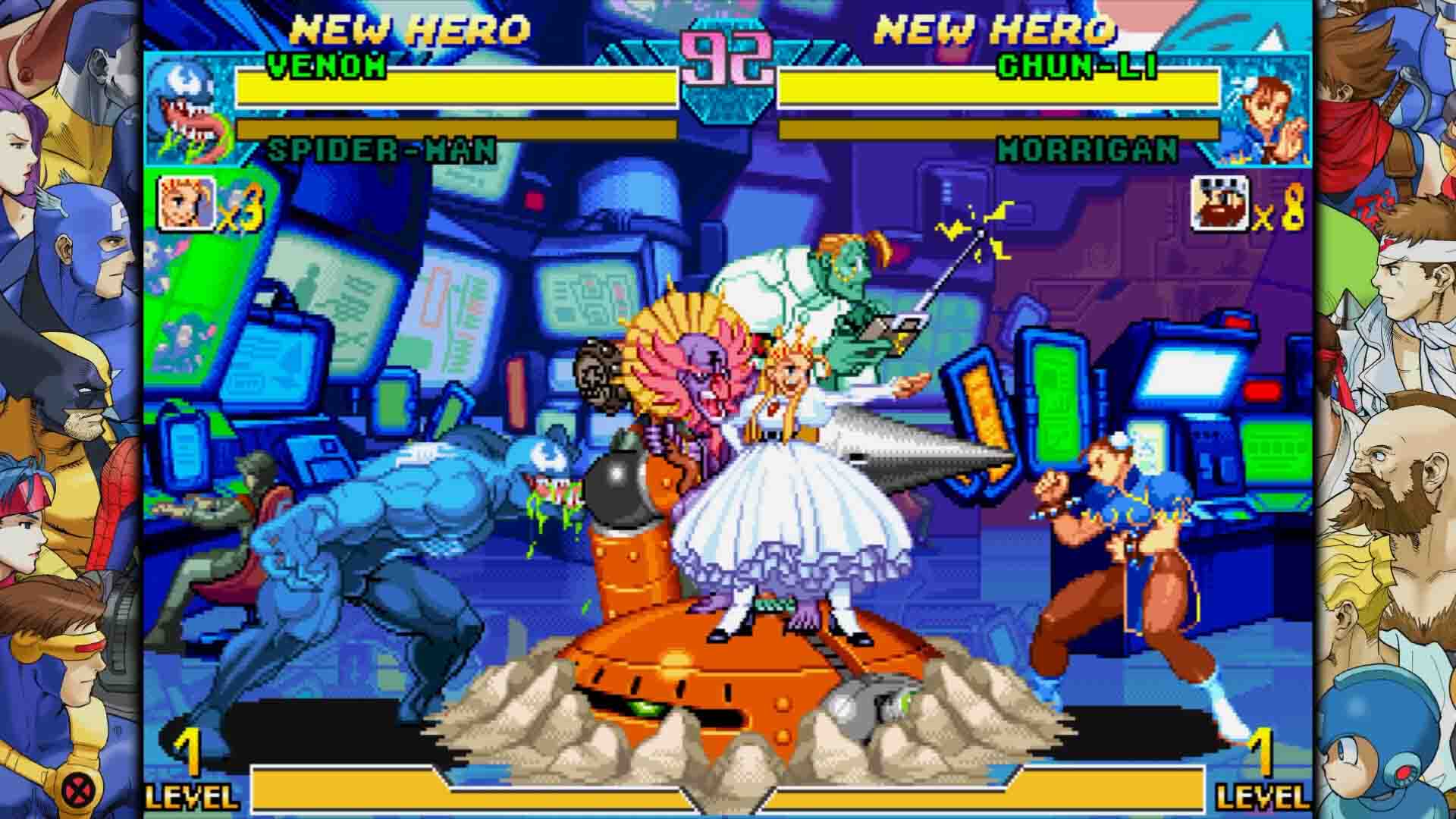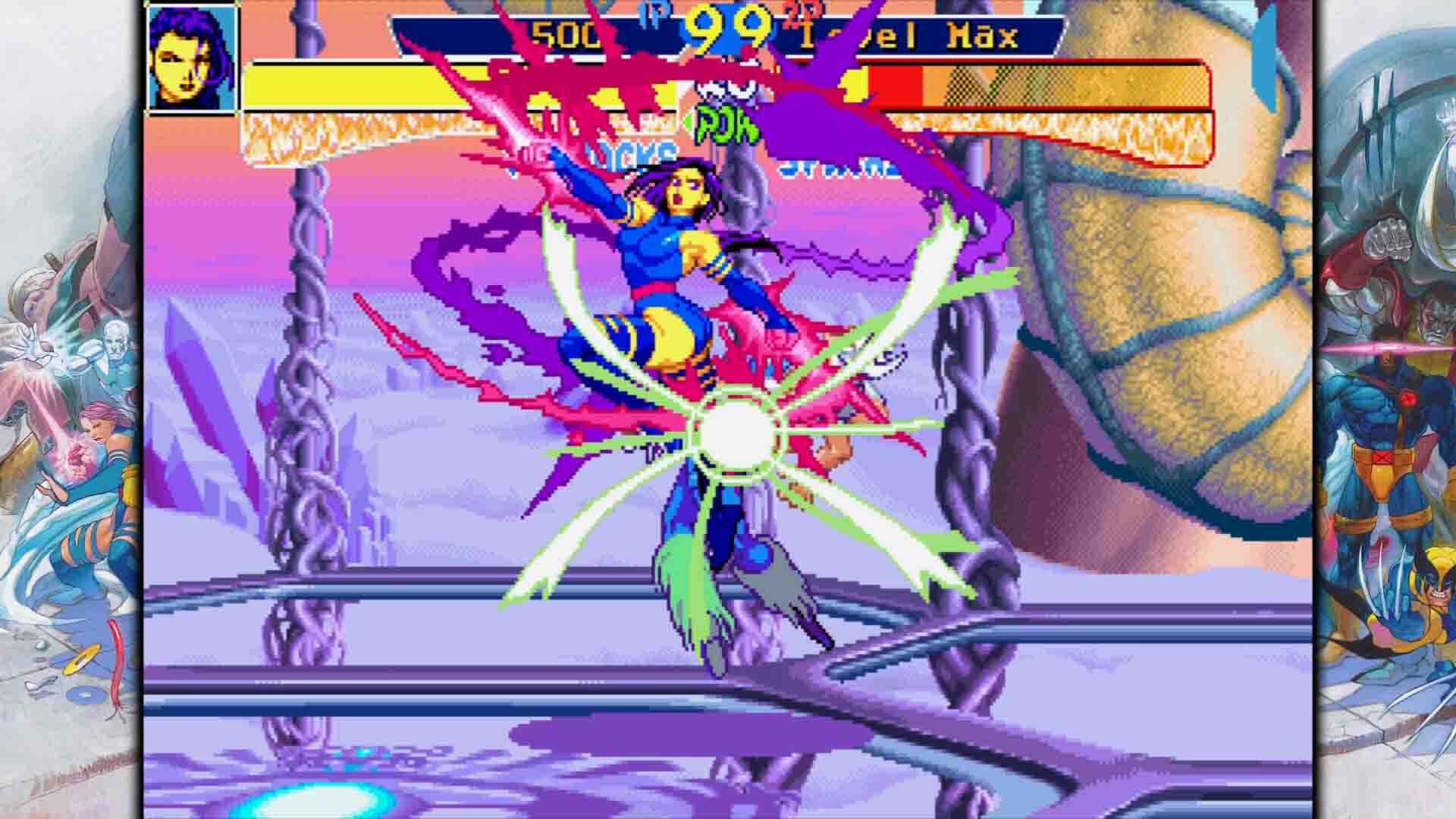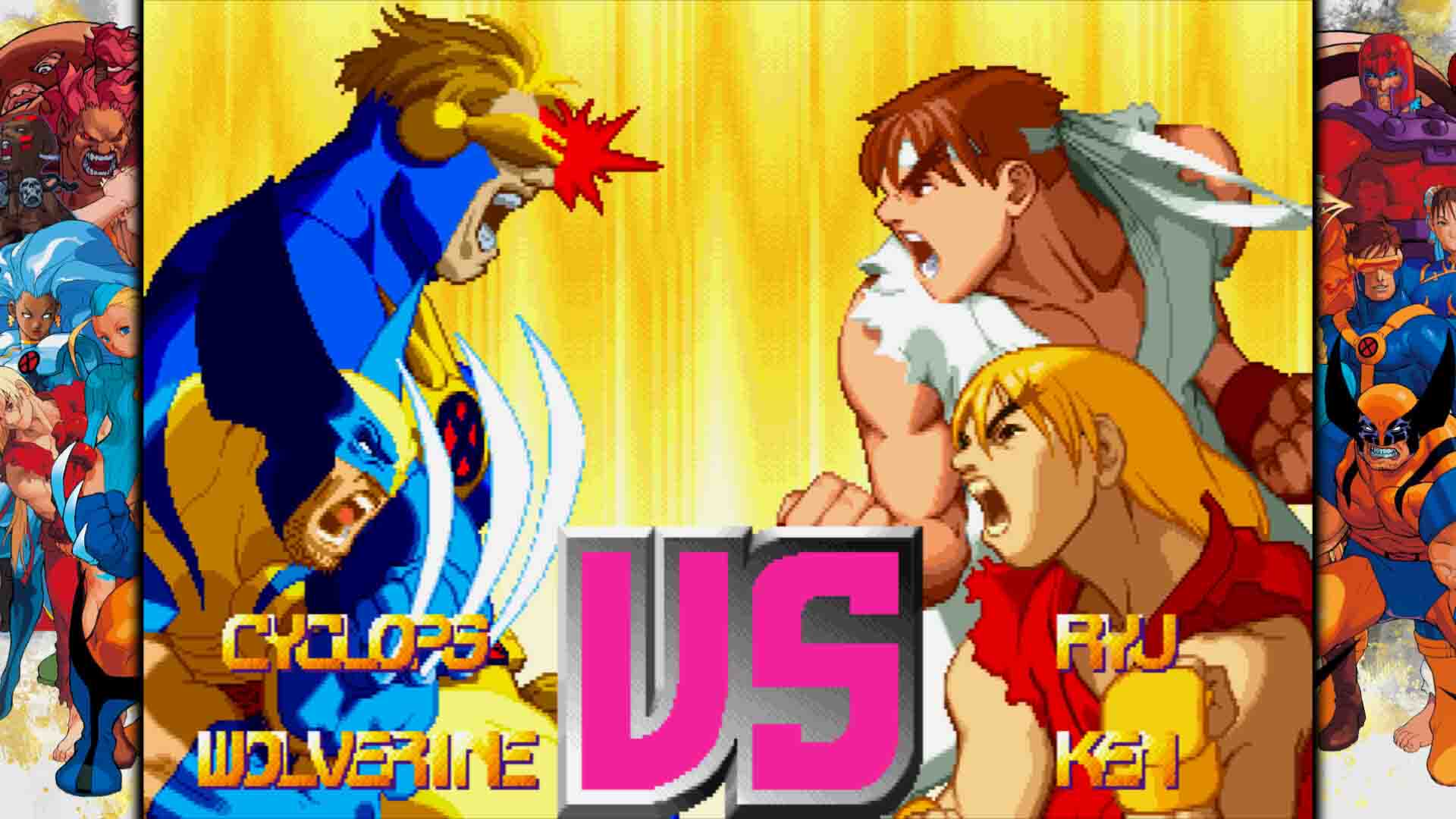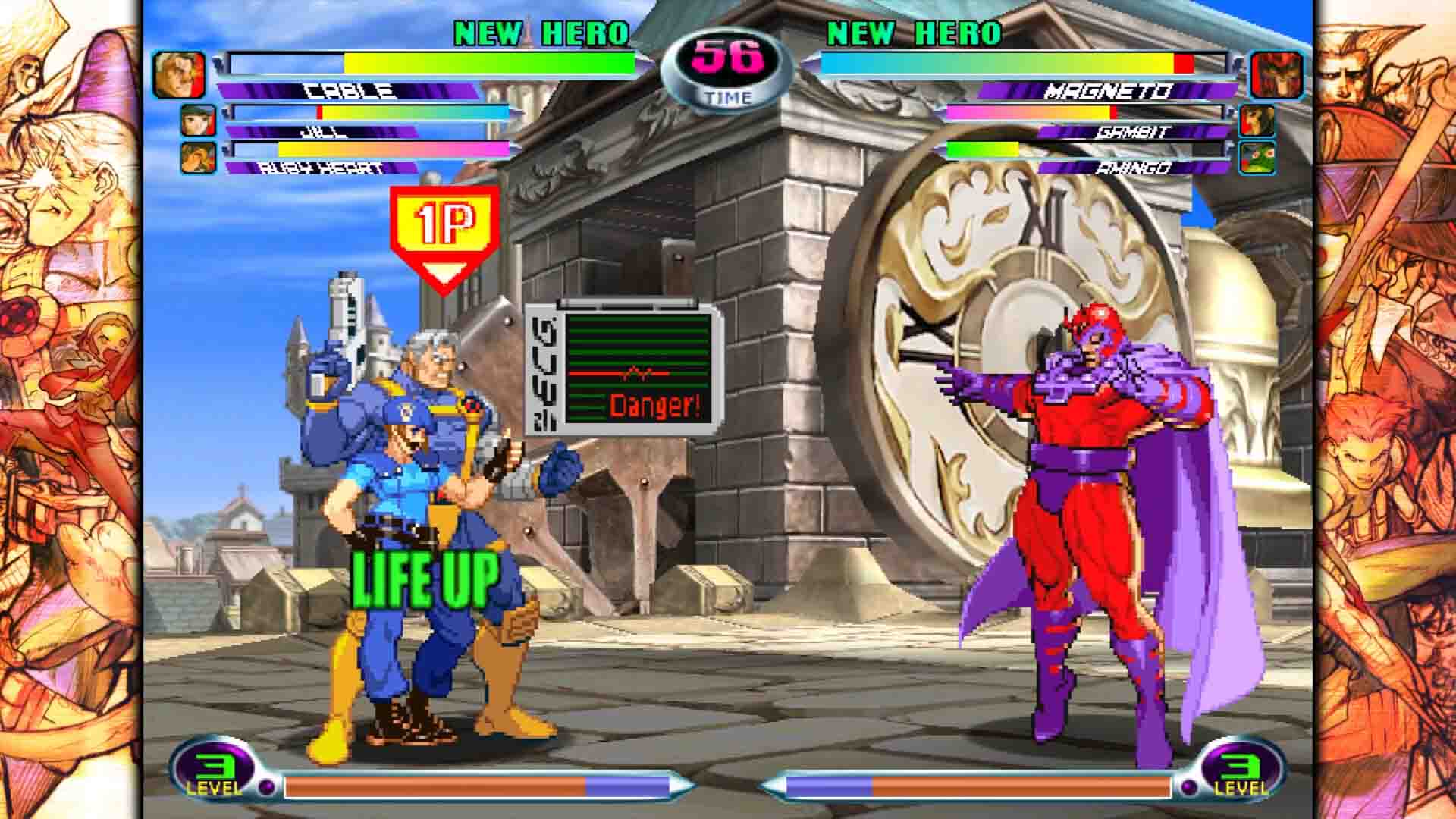Marvel vs. Capcom Fighting Collection: Arcade Classics review
Capcom is on something of a roll in terms of bringing back much-loved classic titles for modern players. In the space of a month we are getting a superb Dead Rising remake, and this, a superlative package celebrating a golden era in 2D fighting games. Marvel vs. Capcom Fighting Collection: Arcade Classics does exactly what it says on the tin, giving us a stacked array of fully licensed games from the halcyon days of 1993-2000 when coin ops were still considered important and relevant. There is no drop off in quality amongst the package, in terms of either emulation or playability, making this an essential purchase for fighting fans.
Capcom’s package from a few years back gave us a brilliant selection of the wildly popular 90s arcade genre, but was understandably lacking a few of the licensed Capcom efforts. Until now, the Punisher (1993) had only ever been released for the Genesis in the form of a technically commendable but lacklustre port courtesy of Sculptured Software, an Acclaim subsidiary who was best known for their terrific Super Star Wars titles for Super NES. With prohibitively expensive arcade hardware the only other way to experience it until now, this stunning take on the vigilante world of anti-hero Frank Castle is an extremely welcome addition to Marvel vs.Capcom Fighting Collection: Arcade Classics, and stands up well thanks to its incredible design, wide variety of possible attacks and weaponry, and genuine comic book feel.

Far more so than any other comic tie in of the era, or attempt to emulate the artform (like Comix Zone), it is like being transported straight into the world of the Punisher, as Castle and sometime partner and S.H.I.E.L.D agent Nick Fury go on a revenge-fuelled tear-up littered with “KRAK!” and “BLAM!” onomatopoeias with the aim of confronting and killing his hulking crime-lord nemesis Kingpin. It features a shocking amount of violence for the time, which is very much in keeping with the character, and some adult themes – one stage involves traversing a clandestine opium poppy grow – and there are plenty of familiar supervillains to batter along the way, including Bonebreaker and Bushwhacker. The Punisher is one of the finest arcade fighters of all time, and a stunning way to dip your toe into Marvel vs. Capcom Fighting Collection: Arcade Classics.
With its 1993 release, The Punisher bridges the gap between the Capcom CP System 1 hardware to its second iteration, which is where five of the remaining six games here are drawn from. Capcom had been given the chance to continue working with the license, and helmed partially by Street Fighter II designer Pom G, 1994’s X-Men: Children of the Atom was their cracking first one-on-one fighter in the Marvel universe. Featuring brilliantly designed interpretations of the X-Men and fast paced action that introduced multi-hit combos that could also be executed in the air, multi-layered stages, and a comic-inspired plotline backing the carnage, it was very well received at the time. Part of the license deal also stipulated that Capcom could include one of it’s own creations in the game, so Akuma popping up was something of a tease for what was to come down the line. On this package X-Men is perfectly emulated, includes playable Juggernaut and Magneto, absent from the original arcade release, and is the best home version of the game ever released.

Capcom followed this up by completing a belting triumvirate of 1995 classics. On the heels of Darkstalkers and Street Fighter Alpha was Marvel Super Heroes, which features a novel tactical system based around the Infinity Gauntlet and its variety of power-imbuing gems. Each fight becomes not only a scrap between the two opponents but a race to collect the various gems which change battle parameters and abilities, some exclusive to certain characters. It includes a stunning selection of characters with some really bold choices such as Shuma Gorath and a surprising Capcom crossover hidden character in the form of Anita, the curious child ally of Darkstalkers mainstay Donovan.
Kicking off the full crossover series was X-Men vs. Street Fighter from the following year, which doesn’t need much explaining. It saw the iconic mutants battling Capcom’s World Warriors in earnest, and features a real-time tag mechanic as you switch between your selected pair of fighters at any stage of the action. 1997 saw a second crossover in the form of Marvel Super Heroes vs. Street Fighter, which swapped out some of the X-Men with other Marvel notables such as Captain America and Spider-Man, and beefed up the tag system by adding the ability to call your partner into the action to perform a special attack without actually swapping characters. This could be chained into combos and was the prototype for the mechanic that would form an important part of what was to come. That was of course the even-bigger Marvel vs. Capcom: Clash of Super Heroes, which was the final CPS2 game featuring Marvel, and what a way to bow out on the classic hardware.

With an even bigger roster of characters, it eschews the partner assist tactics of its predecessor and instead randomly allocates you an assist helper during the character select screen. It also enables a super-powerful joint attack once you fulfil the necessary gauge conditions, where both of your fighters get to whoop some ass at the same time. Typically for Capcom, which was probably at the peak of its arcade creative powers at this stage, the random assist roster is wild. It is a genuine thrill seeing one of the soldiers from Forgotten Worlds or Arthur from Ghosts ‘n’ Goblins spring into the fray on your behalf.
It is worth noting at this stage that despite being created between 27-30 years ago, the sheer beauty of these earlier titles even now cannot be overstated enough. The animations are stunning, the bold interpretations of the characters from the Capcom design team are some of the best imaginings of the Marvel menagerie ever seen. I have been playing on a Steam Deck primarily, and everything looks stunning, crisp and bright, the best way I have experienced these beloved games. A word of warning, however: they were, and remain, very much a fast-paced, flashy and bombastic proposition, and dare I say may even feel a bit overwhelming in their velocity to players used to a slightly more measured modern fighter. There are a plethora of screen size and resolution options throughout the package that do help negotiate the waters of these 90s titles, including the ability to turn off some of the flash effects.

Rounding off this exceptional selection is the game that kicked things into a different gear, not only for Capcom but for the fighting genre in general. Harnessing the power of one of the most iconic arcade systems of all time, the grunt of SEGA’s Naomi helped Capcom forge a beautiful 2.5D world with typically gorgeous hand-drawn 2D sprites clashing in front of tantalising 3D landscapes. It brings back the manual tag assist from old, dispensing the randomised characters from its predecessor. There are different types of assist in play, including hitherto unseen healing abilities. The character roster is an almost intimidating 56-deep, and has some inspired choices drawn from historic comics and Capcom games. It remains in my eyes the pinnacle of the crossover fighting genre, with only Naomi stablemate Capcom vs. SNK 2 (which thankfully is also being re-released next year!) coming anywhere close.
The quality of life tweaks are all present and correct as you would want from this collection, including quick saves, training modes, move input command menus, and some simplified control schemes (however these are restricted from being used in online ranked matches). Rollback netcode and leaderboards are now standard in fighters and this will mark the debut for many of these games to be played online by fight fans across the world.
The gallery of artwork is another addition that we have come to expect in a retro anthology, but this one is a doozy. When in-play you can view the original arcade bezel/marquee artworks, which caused me to have an intense yearning to go back to an arcade of my youth. There are design sketches that show how characters and stages were originally constructed, with the Punisher being particularly fascinating in this regard. Do not sleep on these often-overlooked extras. If I was going to be greedy, then I would have liked a mission-based challenge or training mode for each game, but you can’t have it all. Marvel vs. Capcom Fighting Collection: Arcade Classics is a beautifully curated selection of some of the best one-on-one combat games ever created, with a gun-toting tale of vigilante revenge thrown in as a winsome extra. Essential.




